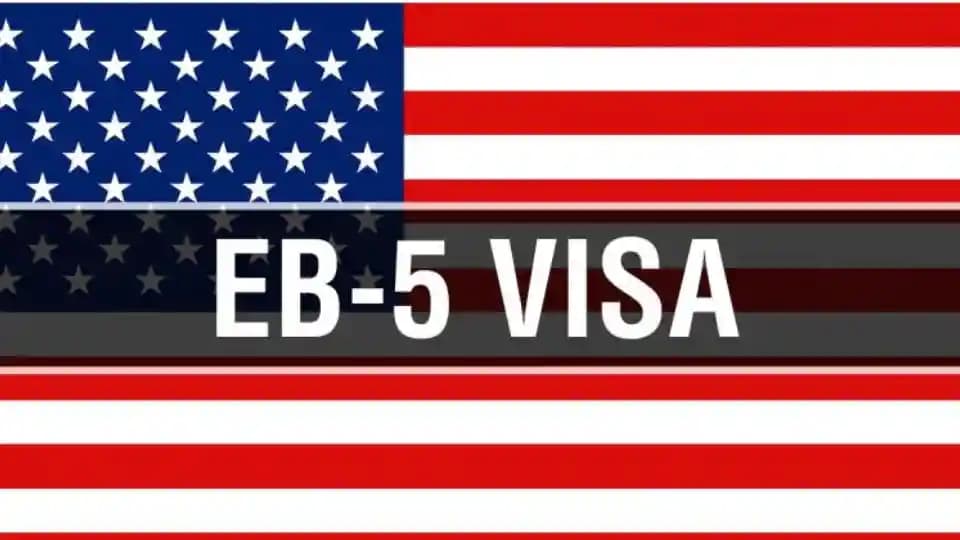Trump can't scrap EB-5 visa—investors have legal safeguards: Explained
EB-5 investor programme has been in place for 35 years. Photo: Shutterstock
By Surbhi Gloria Singh — New Delhi
5 min read | Last Updated : Feb 28 2025 | 2:49 PM IST
US President Donald Trump on Wednesday announced plans for a new $5 million "Gold Card" visa, offering wealthy investors a direct path to US citizenship. The proposed visa is intended to supersede the existing EB-5 investor programme, which has been in place for 35 years and is expected to attract high-net-worth individuals willing to inject substantial capital into the US economy. But can the president shut down the EB-5 programme with an executive order?
"The president can't shut down the EB-5 program, or increase the min investment to $5 million, or make it into a payment to his admin, or increase the cap from less than 10,000 to more than 1 million," said David Bier, director of immigration studies at the Cato Institute, in a social media post.
Piyush Gupta, vice president for India and the Middle East at CanAm Enterprises, a company specialising in EB-5 investments, told Business Standard, "From its inception, the EB-5 program has been legislated by Congress, and under the EB-5 Reform and Integrity Act of 2022 (RIA), it was reauthorized through September 30, 2027. Any changes to the program would require congressional approval."
No, say immigration experts and attorneys. They say the president lacks the authority to unilaterally scrap the EB-5 programme or create a new visa category without congressional approval.
The US Congress established green card caps and visa categories under the Immigration and Nationality Act.
"Congress just reformed the EB-5 in 2022, and there is no authority to make these radical changes. While Trump could use his 'parole' authority to grant temporary lawful residence to people willing to pay $5 million, his administration has taken the position that this type of 'categorical' parole is unlawful," said Bier.
Trump also claimed that the "Gold Card" visa would offer "green card privileges" and a "path to citizenship." Bier pointed out that only an actual green card could provide such benefits, making the proposed visa legally questionable. "It is doubtful that wealthy people would pay $5 million for something with dubious legal standing or a temporary status that could be rescinded at any time," he said.
How are investors protected?
Investors who have already put money into EB-5 projects will not be left in limbo, thanks to legal safeguards in place.
"The statutory grandfathering provision guarantees that investors who file their petitions before September 30, 2026, will be processed under the current law and have EB-5 visas available. Under this provision, any EB-5 investor who submits a petition before this date will be adjudicated under the regulations and eligibility criteria in effect at the time of filing, regardless of any future policy changes," said Gupta.
For instance, CanAm Enterprises uses additional safeguards, including an escrow system.
"We hold EB-5 capital in a protected escrow account until USCIS issues the investor’s I-526E filing receipt notice. Only after USCIS confirms the petition’s proper filing do we release funds into the investment project. If USCIS does not issue a receipt, the funds are available for refund. These protections remain unchanged," Gupta explained.
How the EB-5 investor programme works
- The current EB-5 programme allows investors to contribute between $800,000 and $1.05 million.
- To qualify under the $800,000 investment, the project must be located in a rural or high-unemployment area.
- The investment must create at least 10 full-time jobs for US workers within two years.
- The programme has an annual cap of 9,940 participants, including spouses and minor children, meaning only about a third of the visas go to investors themselves.
The process for obtaining an EB-5 visa is divided into two stages. Investors first submit a petition outlining how their investment will create 10 jobs. If approved, they receive a conditional green card. After two years, they must provide evidence that the jobs were created to remove the conditions on their green card.
The programme has seen high denial rates due to its complexity. According to the Cato Institute, "Since 2007, more than one in five investors was rejected at the initial stage, and about one in ten were rejected at the second stage."
Since 2007, about 100,000 investor petitions have been filed. Before 2020, the minimum investment was $500,000. Trump raised it to $900,000 through regulation, but that increase was blocked in court. In 2022, Congress stepped in and adjusted the minimum amount to $800,000. The lower investment threshold remains the most popular option since it applies to targeted areas.
Expert insights: Why improving EB-5 is better than scrapping it
Varun Singh, managing director of XIPHIAS Immigration, believes that improving the EB-5 programme, rather than scrapping it, would be a better approach.
"Instead of scrapping the program, the US should focus on refining and expanding it to enhance transparency and accessibility. A reformed EB-5 program with faster processing and stricter compliance measures would benefit both Indian investors and the US economy. Policymakers must recognize that welcoming job-creating investors is a win-win scenario, and shutting the door on them would only push global capital elsewhere," said Singh in a discussion with Business Standard.
He added, "If the US wants to maintain its position as a preferred investment and immigration destination, protecting and improving the EB-5 program is not just advisable—it is imperative."



